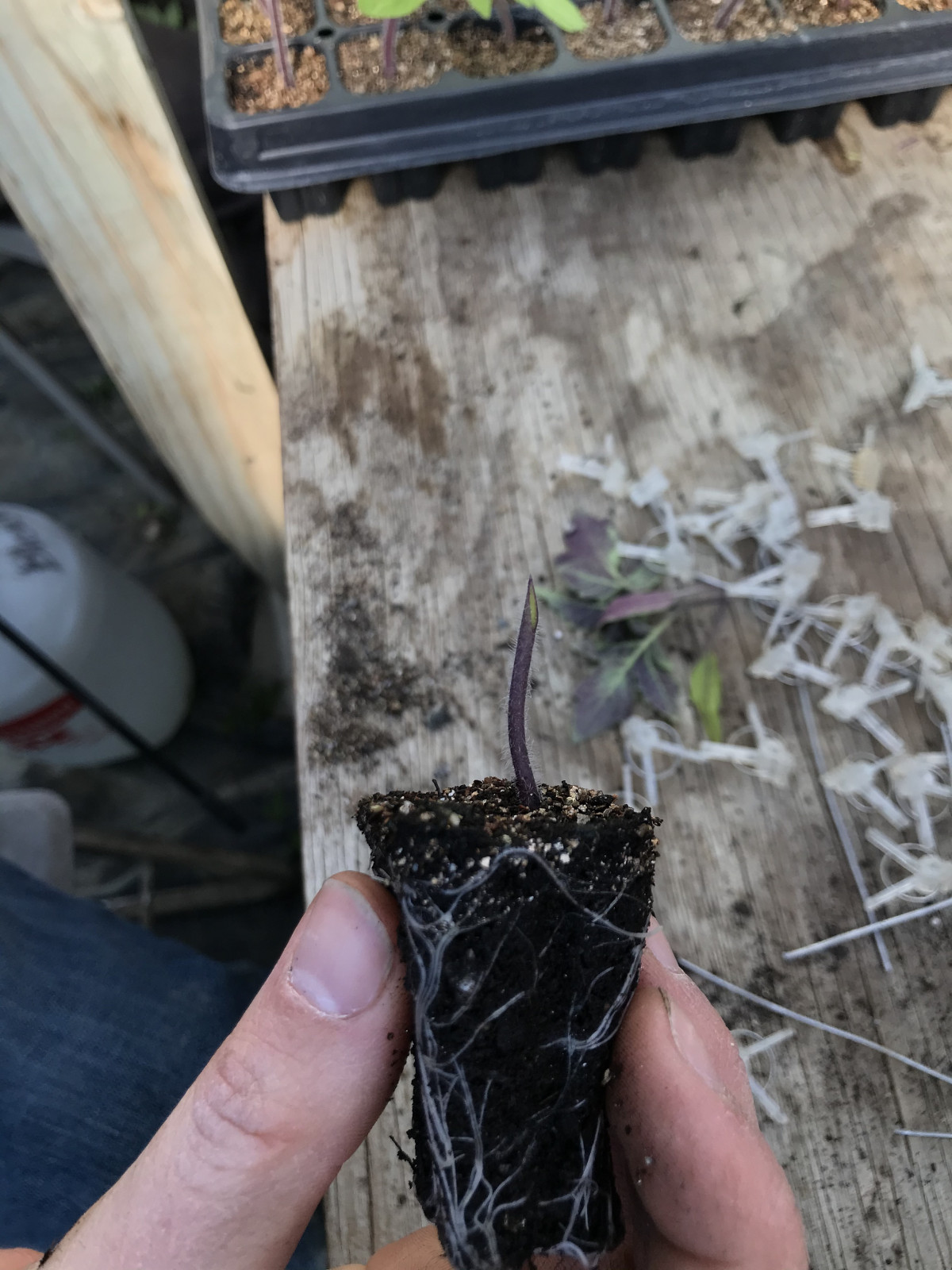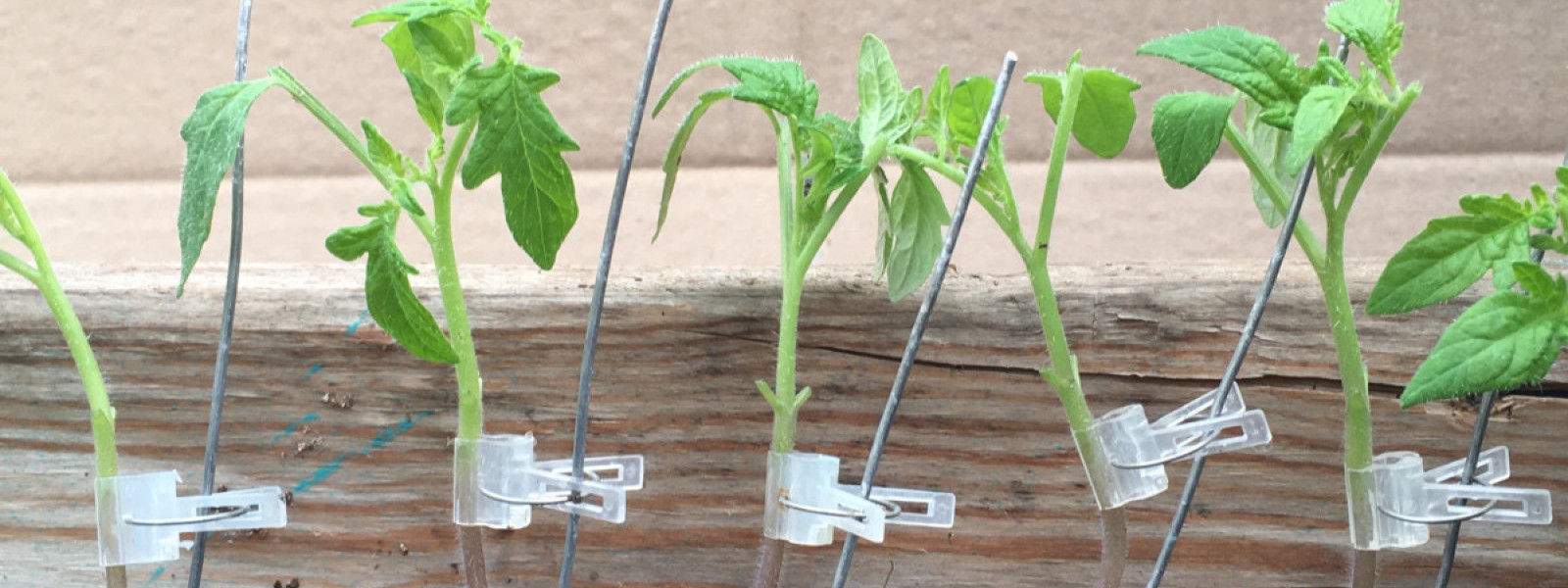It’s Time to Graft Tomatoes!
This week we grafted tomato plants. Grafting is the process of joining the tissues of two different plants so that they grow together as one. The new tissue added to the plant is called the scion. This is usually chosen for its flowers and fruits. The rootstock is the plant that the scion is grafted to.
When grafting tomatoes the rootstock and the scion plants are cut in half. Then the top of the scion plant and the roots of the rootstock are attached by placing the cut stems together. (Left: What the rootstock looks like before adding the scion. Right: The stems are held in place with a clip.)

After grafting, the plants are placed in a dark box for a week. Aptly named the “healing chamber”, they stay in this warm, high humidity environment and gradually get acclimated to the sunlight by an hour each day until they are healthy. (For a more in-depth guide to the grafting process click here.)
It seems improbable that the plants can survive and continue growing after being decapitated, but every year we graft over 300 tomato plants with a 98% success rate.
You may ask yourself why we go through all this trouble. Well, what doesn’t kill a plant makes it more disease resistant! These slicer tomatoes are the ones that we grow in our hothouses. The scion we use is a hybrid slicer tomato that produces high yields. The rootstock is a generative rootstock meaning it puts most of its energy into fruit production. The resulting grafted tomato combines the best qualities of both the scion and rootstock and allows us to enjoy juicy red tomatoes early in the season!







